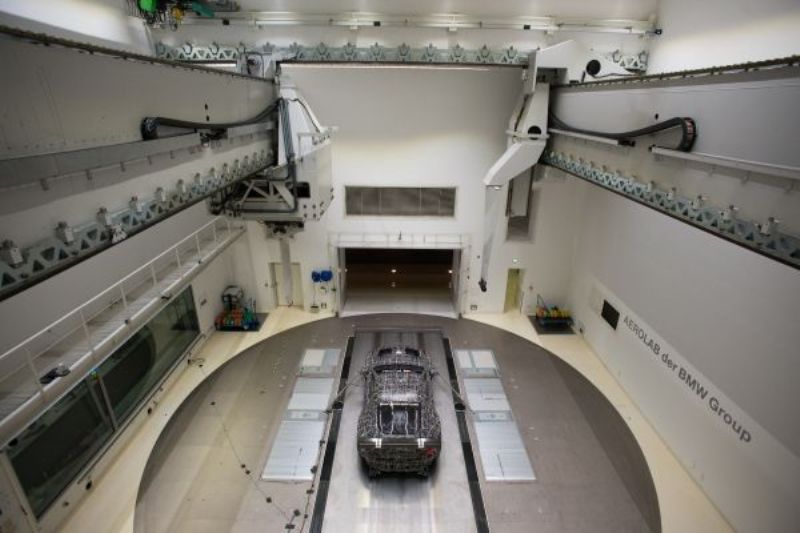
The test work is entering a critical phase as the new BMW M8 GTE prepares to make its race debut at the 24 Hours of Daytona (USA) in January. During the development of the car, which will compete in the FIA World Endurance Championship (WEC) and the IMSA WeatherTech SportsCar Championship (IWSC), the engineers have focussed on aerodynamics, among other things.
The BMW M8 GTE boasts a host of innovative features which will also be incorporated in the development of future production vehicles, particularly the BMW 8 Series Coupé.
“One of the premises for the development of the BMW M8 GTE is the close relationship between motor racing and production,” said BMW Motorsport Director Jens Marquardt.
“The various departments have also worked hand in hand in the area of aerodynamics. We have benefitted greatly from the intense cooperation with central prototype assembly and the BMW Group’s Aero Lab. During development, this allowed us to work even more efficiently on the aero components, which have been designed specifically for long-distance racing. At the same time, our colleagues in production development have received information that is valuable in the field of high-performance automobiles.”
The efficient and robust solution to aerodynamic drag
In addition to sprint races, the new BMW M8 GTE will primarily be in action in endurance races all over the world. With this in mind, the BMW Motorsport engineers aimed to achieve an aerodynamic solution that offers maximum efficiency and at the same time is as robust as possible. This refers not only to the durability of the components themselves, but also the aerodynamic stability and handling of the race car as a whole.
The development of the components began at the conception, on which the aerodynamics experts worked closely with their colleagues in the fields of driving dynamics and simulation. In total, well over 1,000 CFD calculations were performed for the BMW M8 GTE.
From idea to prototype in one day
The use of innovative technology such as additive manufacturing, in close cooperation with the BMW Group’s Additive Manufacturing Centre, resulted in faster and more efficient development work. Starting with an idea proposed by an aerodynamic specialist, it sometimes took less than 24 hours to manufacture and test a component in the wind tunnel.
BMW Motorsport also used synergies with production development in the wind tunnel itself, and benefitted from the perfect test conditions at the BMW Group Aero Lab. In total, several hundred wind tunnel tests were performed whilst developing the aerodynamic properties of the BMW M8 GTE – first with models, then with the car itself.
Ultimate acid test on the racetrack
Following the successful testing in the wind tunnel, the aero components were then tested under real conditions out on the racetrack. Those tests revealed how the aerodynamics influence the temperature of the engine and brakes, what feeling the driver gets during various manoeuvres, and how changing track conditions can affect aerodynamics.
One result of the intensive aero development is the innovative “Swan Neck” rear wing. This allows a particularly clean airflow on the critical underside of the rear wing, thus increasing efficiency. In addition, the sloping roof line adopted from the BMW 8 Series Coupé facilitates the air flow to the rear wing. The strikingly wide rear diffuser also contributes to improved aerodynamic efficiency.
The wing mirrors on the BMW M8 GTE are another example of the close links between the racing car and the production car, and they hint at the design language of the new BMW M8.
In the course of the technology transfer, the BMW Motorsport engineers and designers are in constant contact with their colleagues in production, and test various options and processes. This way, the innovations and findings that emerge from the development of the BMW M8 GTE are incorporated in the next generation of BMW production models, where they again improve aerodynamic efficiency.


































